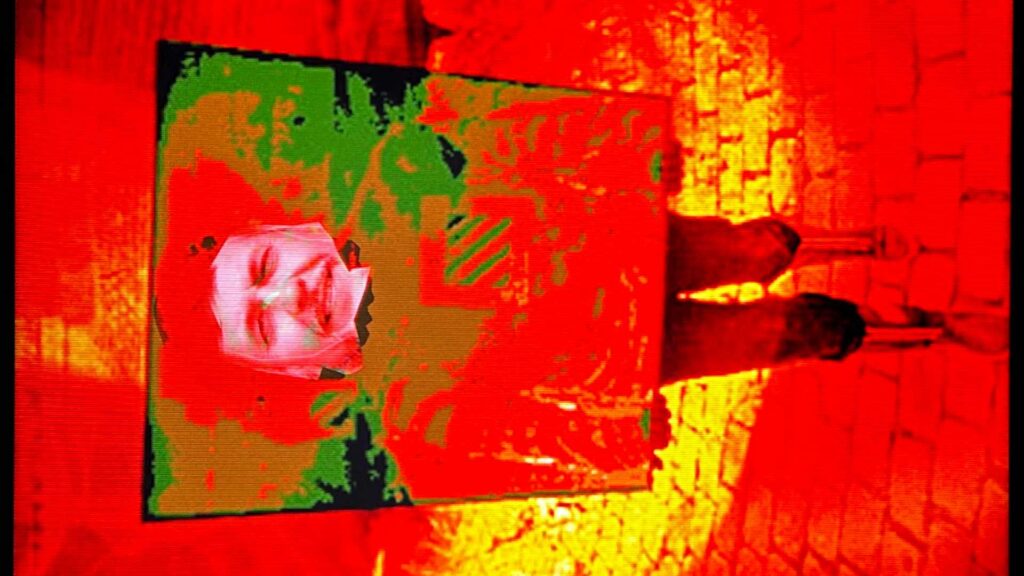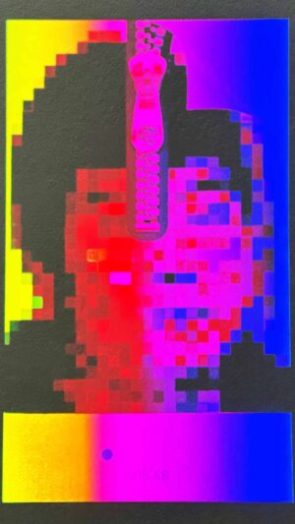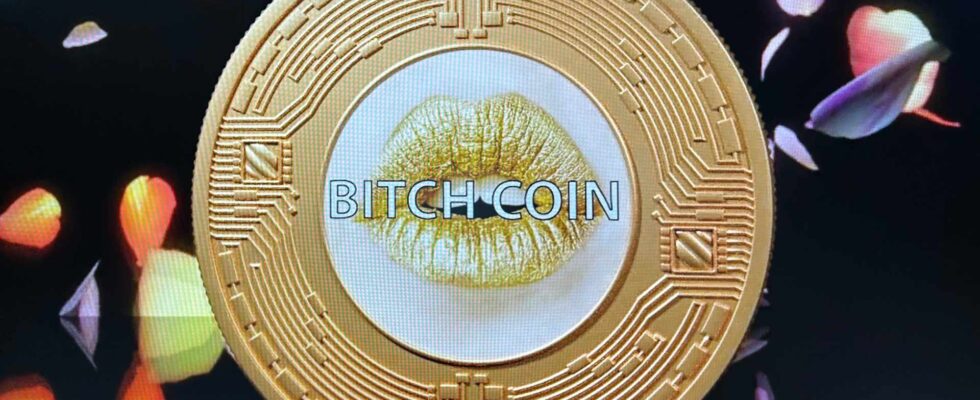Since the beginning of May 2023, 18 NFTs have been exhibited at the Center Pompidou. The Parisian institution, which specializes in modern works, sees in it an important movement and the revival of digital art. Yet NFT sales are plummeting.
A projector beams a pixelated portrait onto a white wall, and next to it a screen loops a video showing smoke rising above two outstretched hands. No doubt, I’m in a museum of modern art — at the Center Pompidou, in Paris, to be exact. But the room in which I find myself is unique, even for the museum, which already hosts unusual works: here, there are only NFTs.
NFTs, for non fungible tokens (non-exchangeable tokens in French), have shaken up the art world since the explosion of their popularity in 2021. They work like certificates of authenticity hosted on a blockchain, and make it possible to make intangible files “unique”. This feature quickly attracted artists, many of whom launched NFT collections.
In February 2023, the Center Pompidou caused a stir when it announced that it had acquired several NFTs, including a CryptoPunk — one of NFT’s most prized collections. Since the beginning of May, the 18 works are now on display, and according to the museum, highlight the impact of blockchain in digital art.
Animated NFTs projected onto screens
You have to know where to go to find the NFTs in the museum. The collection can be found in two discreet rooms on the 4th floor, with subdued lighting. The famous CryptoPunk thrones in the room, visible first, accompanied by the others non fungible tokens from the Center Pompidou.
Here, no metaverse or virtual reality headset. The NFTs are projected directly on the wall, or broadcast on screens. Some works are animated, like the “BitchCoin” NFT which turns on itself, or a bouquet of flowers, which is even accompanied by music. But others are static, starting with CryptoPunk. The Bitcoin logo is also stationary, as are three other charts, which simply display colors. In the end, compared to other rooms in the museum, nothing changes drastically.
However, the museum insists on the innovative side of these NFTs. A sign states that they reflect “ the diversity of artistic cultures that is specific to the Web3 landscape “, and that they seem ” respond to the questions posed since the 20th century by the authentication and circulation of immaterial works “.

What future for NFTs?
The only real difference with the other works in the museum is not observable by visitors: the certificate of authenticity itself. It takes the form of a sequence of characters registered in the blockchain, and only points to the works themselves, which are not stored on the chain.

This particularity raises a question: what will remain of the works tomorrow? The blockchain itself is intended to be permanently accessible, and must exist perpetually. This is not necessarily the case for works, which can take the form of files hosted on the Internet – and which can therefore disappear for good. Some buyers have already paid the price, and if we can suspect that the Center Pompidou has taken precautions, this is not necessarily the case for everyone.
So what will tomorrow remain of NFTs as an artistic movement? Unlike previous currents, this one remains largely intangible. While NFTs themselves are meant to represent blockchain permanence, the paradox is notable.
The arrival of the NFTs at Pompidou also came at a critical time. After peaking in popularity in 2021, sales of non-fungible tokens are falling. While some collections have been accused of being tricks and investors have lost a lot of money, their reputation has taken a beating.
Once the appeal of novelty has passed, can NFTs be maintained and really impose themselves as an artistic medium? Will the Center Pompidou act as an archive for non-fungible tokens, if they disappear in a few years? For the moment, impossible to say. In the meantime, you can admire these images for yourself, animated or not, inside the museum.
If you liked this article, you will like the following ones: do not miss them by subscribing to Numerama on Google News.
